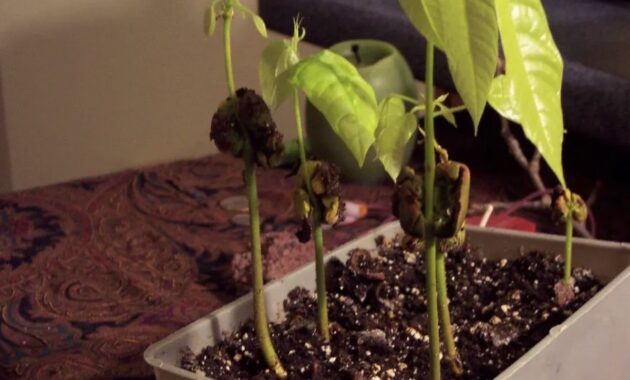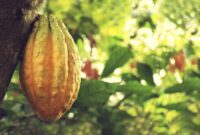
Ah, the cacao plant—the source of one of the world’s most beloved indulgences: chocolate! My fascination with cacao began during a trip to a tropical rainforest in South America. Walking through the lush greenery, I stumbled upon cacao trees, their vibrant pods hanging like colorful ornaments. It was in that moment I realized just how special this plant is, not only for its delicious produce but also for its rich cultural and historical significance.
What is the Cacao Plant?
The cacao plant, scientifically known as Theobroma cacao, is native to the deep tropical regions of Central and South America. The name Theobroma translates to “food of the gods,” which perfectly captures the plant’s revered status. This small evergreen tree can grow up to 8 meters (around 26 feet) tall, but in cultivation, it is often pruned to about 4 to 6 meters (13 to 20 feet) for easier harvesting.
Characteristics of the Cacao Plant
- Scientific Name: Theobroma cacao
- Common Names: Cacao, cocoa tree
- Family: Malvaceae
- Height: Typically 4 to 6 meters (13 to 20 feet) in cultivation
- Leaves: Dark green, glossy, and elliptical in shape
- Flowers: Small, white to pink flowers that grow directly on the trunk and branches
- Pods: The cacao pods are oval-shaped and can be yellow, orange, or red when ripe. I was amazed when I first opened a cacao pod—inside, the bright white pulp surrounds the cacao beans, which are the real treasure!
Growing the Cacao Plant
Growing cacao can be quite rewarding, but it does require specific conditions. Here’s what I’ve learned from my own gardening adventures:
- Climate Requirements: Cacao thrives in hot, humid tropical climates. It prefers temperatures between 20°C and 32°C (68°F to 90°F). During my first attempt at growing cacao, I mistakenly tried it in a temperate zone. Spoiler alert: it didn’t work out!
- Soil Preferences: Cacao needs well-draining, nutrient-rich soil with a pH level of around 6 to 7. I usually mix in compost and organic matter to create the perfect environment. Trust me, your cacao plants will thank you!
- Light Conditions: Cacao prefers dappled sunlight or partial shade. In the wild, these trees often grow under the canopy of taller trees. I learned this the hard way when I placed my cacao saplings in full sun, resulting in sunburned leaves. Oops!
- Watering Needs: Consistent moisture is crucial for cacao plants. They prefer evenly moist soil, but be careful not to overwater. I once had a scare when I saw yellowing leaves due to excessive watering, but they bounced back after adjusting my watering schedule.
Propagation of Cacao
If you’re excited to propagate cacao, you have a couple of options:
- Seed Propagation: This is the most common method. The seeds should be planted soon after extraction from the pods for the best germination rates. I made the mistake of letting mine dry out before planting, which severely affected their sprouting ability.
- Cuttings: While more challenging, it’s possible to propagate cacao through cuttings. Select healthy, young branches, and plant them in a nutrient-rich medium. It can take a bit of patience—much like waiting for chocolate to set!
Caring for Cacao Plants
To keep your cacao plants thriving, here are some essential care tips:
- Fertilizing: Cacao plants are heavy feeders. A balanced fertilizer every 6-8 weeks during the growing season can make a world of difference. I mix in fish emulsion and organic fertilizers, which has yielded impressive results!
- Pruning: Regular pruning helps maintain shape and promotes airflow, reducing the risk of disease. I found that pruning in the late dry season encourages new growth when the rains begin.
- Pest Management: Watch out for pests like cacao pod borer and mealybugs. I learned the hard way that early intervention is key. I now use neem oil as a natural remedy, and it works wonders!
The Lifecycle of Cacao
Cacao plants typically begin producing fruit after about 3 to 5 years. The lifecycle of cacao involves several stages:
- Flowering: The small flowers bloom directly from the trunk and branches, a process that can be quite fascinating to observe. It feels like magic when the flowers begin to appear!
- Pod Development: After pollination, cacao pods begin to develop. They take about 5 to 6 months to ripen. During this time, I often find myself checking the pods daily, eagerly waiting for that moment when they change color and are ready for harvest.
- Harvesting: When the pods are ripe, they are carefully cut from the tree. This is usually done by hand, using a machete or sharp knife. Harvesting can be a bit labor-intensive, but there’s something incredibly satisfying about collecting fresh cacao pods.
- Fermentation: The harvested cacao beans need to be fermented for about 5 to 7 days. This process is crucial for developing the rich flavors we associate with chocolate. I once tried to skip this step, and let’s just say the end result was less than ideal!
- Drying: After fermentation, the beans are dried in the sun for about 1 to 2 weeks. Proper drying is essential to prevent mold. I learned to keep an eye on the weather, as unexpected rain can ruin a good drying day.
- Roasting: The dried beans are then roasted, which brings out the chocolate flavor. This is one of my favorite parts of the process—the aroma is simply divine!

Culinary Uses of Cacao
Cacao is a versatile ingredient used in various culinary applications:
- Chocolate: Of course, the most popular use is in chocolate production. Whether it’s dark, milk, or white chocolate, cacao is the star of the show. I love experimenting with homemade chocolate bars, adding ingredients like sea salt or nuts for an extra kick!
- Baking: Cacao powder can be used in a range of baked goods, from brownies to cookies. The depth of flavor it adds is unparalleled. I always keep a jar of cacao powder handy in my kitchen.
- Smoothies and Drinks: Adding cacao to smoothies or making a hot cacao drink is a delicious and healthy treat. It’s a fantastic way to satisfy chocolate cravings without indulging too much.
Health Benefits of Cacao
Apart from its delightful taste, cacao also has several health benefits:
- Rich in Antioxidants: Cacao is packed with antioxidants, particularly flavonoids, which help combat oxidative stress. I often remind my friends that enjoying a bit of dark chocolate can be beneficial!
- Mood Booster: Cacao can enhance mood and promote feelings of happiness, thanks to compounds like phenylethylamine. On tough days, I treat myself to a piece of dark chocolate—it’s like a little hug from nature!
- Heart Health: Some studies suggest that the flavonoids in cacao can improve heart health by lowering blood pressure and improving circulation. It’s another reason to indulge—just remember moderation is key!
Common Challenges
While growing cacao can be a rewarding endeavor, it does come with its challenges:
- Susceptibility to Diseases: Cacao plants can be vulnerable to diseases such as black pod disease and witches’ broom. I always keep a close eye on my plants, checking for signs of distress and acting quickly when needed.
- Slow Growth: Patience is crucial when growing cacao. It can take several years before you see a significant harvest. I’ve learned to appreciate the journey and find joy in nurturing my plants along the way.
- Temperature Sensitivity: Cacao is sensitive to cold temperatures, so if you live in a cooler climate, you’ll need to provide protection during the winter months. I bring mine indoors when the temperature drops, and they seem to thrive in my sunny kitchen!
Final Thoughts
The cacao plant is truly a marvel of nature, offering not only delicious chocolate but also a wealth of health benefits and culinary possibilities. Whether you’re considering growing it yourself or simply indulging in a chocolate treat, understanding the journey of cacao adds another layer of appreciation.
So, the next time you bite into a piece of chocolate, remember the journey it took to get there—from the beautiful cacao plant to your taste buds. It’s a sweet reminder of nature’s magic, and I hope you’ll join me in celebrating this incredible plant!
Feel free to reach out if you have more topics in mind or need further assistance!



